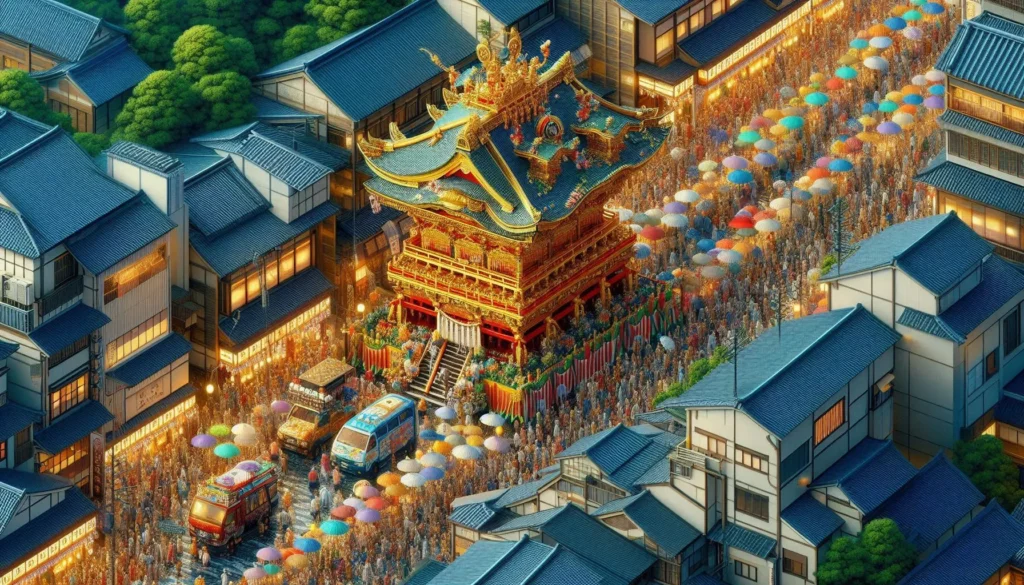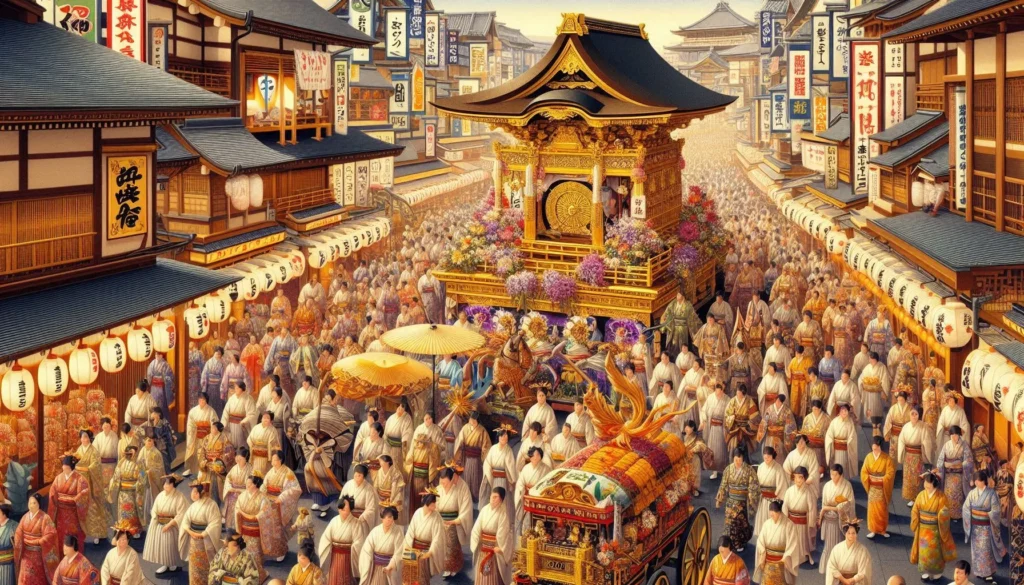
Unveiling the Dark Side of Kyoto’s Most Celebrated Festival
Gion Matsuri, Kyoto’s world-renowned festival, is often depicted as a vibrant, joyful celebration, steeped in centuries of tradition and cultural pride. However, beneath the surface of this colorful spectacle lies a series of disquieting truths that are rarely discussed. From the perilous construction of colossal floats to the overwhelming crowds that turn the city into a chaotic maze, the festival’s darker aspects deserve a closer look.
The Treacherous Construction of Gion Matsuri Floats
One of the most iconic elements of Gion Matsuri is the grand parade of floats, known as “yamaboko.” These floats, towering up to 25 meters and weighing several tons, are a marvel of traditional Japanese craftsmanship. Yet, the process of building and assembling these giants is fraught with danger.
The construction of these floats involves intricate wooden frameworks assembled without the use of nails, relying solely on precise interlocking joints and ropes. While this technique showcases incredible skill, it also poses significant risks. Craftsmen often work at dizzying heights, balancing on narrow beams without modern safety equipment. In the rush to complete these masterpieces on time, accidents are not uncommon. Every year, injuries occur, and though fatalities are rare, the possibility looms over the festival’s preparations.
The Overwhelming Crush of Gion Matsuri Crowds
Gion Matsuri attracts millions of visitors from around the world, all eager to witness the grand processions, traditional music, and stunning kimonos. However, the sheer volume of attendees creates a potentially hazardous environment.
Kyoto’s narrow streets, beautiful yet impractical for such massive gatherings, become congested with people, leading to extreme crowding. This congestion can turn dangerous, as emergency services struggle to navigate the throngs of festival-goers. The risk of stampedes is a constant concern, especially during the Yoiyama evenings, when the city is illuminated by thousands of lanterns, and the crowds are at their peak.
Environmental Toll of Gion Matsuri
While Gion Matsuri is a celebration of tradition, it comes at a significant environmental cost. The festival generates an enormous amount of waste, from the discarded food wrappers and drink containers to the inevitable litter left behind by the massive crowds.
The beautiful floats, often adorned with rare and expensive materials, are sometimes discarded after the festival, contributing to environmental degradation. Efforts to recycle and reuse materials are growing, but the festival’s environmental footprint remains a pressing issue. The strain on Kyoto’s resources during the festival is immense, prompting calls for more sustainable practices.
Cultural and Social Strains
Gion Matsuri’s focus on tradition also highlights the tensions between preserving cultural heritage and addressing modern societal issues. The festival has been criticized for its lack of inclusivity, particularly regarding gender roles. Historically, women were prohibited from participating in certain aspects of the festival, such as riding the floats. Although some progress has been made, gender discrimination remains a contentious topic.
Moreover, the commercialization of Gion Matsuri has led to concerns about the festival losing its cultural significance. As corporate sponsorships and tourist-centric events increase, there’s a growing fear that the true essence of Gion Matsuri – a spiritual and communal celebration – is being overshadowed by commercial interests.

The Duality of Gion Matsuri: Preserving Tradition in a Modern World
Despite these challenges, Gion Matsuri remains a vital part of Kyoto’s cultural identity. It is a testament to the city’s resilience and dedication to preserving its rich heritage. However, acknowledging the festival’s darker aspects is crucial for its future. By addressing the safety, environmental, and social issues, Gion Matsuri can evolve into a celebration that honors its traditions while embracing progress and inclusivity.
In conclusion, Gion Matsuri is a paradox – a breathtaking celebration of tradition that simultaneously grapples with modern challenges. The festival’s allure is undeniable, drawing millions into its enchanting world each year. Yet, as we marvel at the grandeur of Gion Matsuri, it is essential to recognize and address the underlying issues to ensure this historic festival can continue to thrive in a safer, more sustainable, and inclusive manner.
Reflecting on the Shadows of Gion Matsuri
As we look forward to future celebrations, let’s strive to balance the preservation of tradition with the necessary changes to protect and sustain this magnificent festival. Only by confronting the shadows of Gion Matsuri can we ensure that its light continues to shine brightly for generations to come.
Read more: Exclusive Celebrating: the Joyous Festival of Holi



